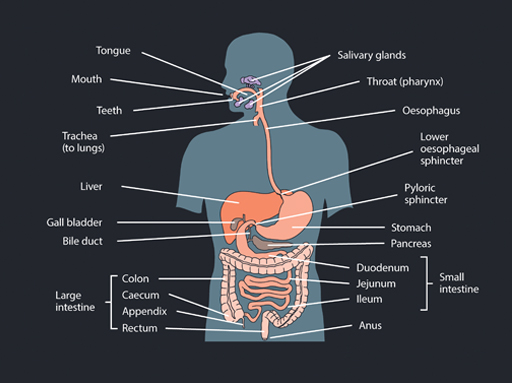1.1 Opening out the human digestive system
Food moves through the body, but how exactly is it digested?
When food is eaten, it is chewed up and mixed in the mouth with saliva. This starts the process of digestion and makes the food easier to swallow. It passes down a tube called the oesophagus and enters the stomach through what is normally a one-way valve. It is possible to swallow food into your stomach when you are upside-down!
After spending some time in the stomach, where the food is further broken down, it is released into the small intestine. Digestive juices are added from the gall bladder and pancreas, so more of the food breaks down. Many of the small molecules produced are absorbed into the blood.
In the large intestine, large numbers of microbes help with the final stages of digestion. Most of the water is absorbed from the food to leave the undigested fibre and countless millions of microbes. These are stored in the rectum and finally expelled from the body through the anus as faeces.

